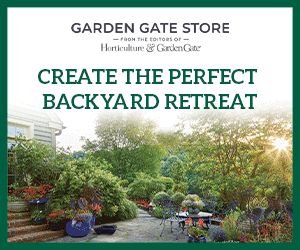Garden shapes
By: Garden Gate staff

| 1 of 4
Garden design by shape
Don’t feel overwhelmed organizing a foundation planting! You need just a few simple shapes to create your design. To start, grab your camera, head outdoors and snap a picture of your house. Print off several copies and begin sketching the shapes ahead.
Once you have a design you like, simply “plug in” plant choices that fit the shapes — every shrub and tree can be viewed as a geometric form, either the way it grows naturally or how it’s been clipped. And each of these shapes has a purpose. Keep clicking to find out more.

| 2 of 4
Pyramidal shapes for focus
EYE CATCHER Wherever this shape is placed, it will draw attention. And the narrow top will cause you to look up. Use pyramids sparingly, implementing them near an entrance, to frame a view (as they do in this photo) or at the start of a path.

| 3 of 4
Calming horizontal shapes
STRAIGHT AND EVEN Low plants with flat tops, wider than they are tall, emphasize length. These evergreens flanking the sidewalk are a good example of horizontals. Other shapes can be planted close together and clipped to form hedges to get this shape. Horizontal forms have a comfortable stabilizing effect.

| 4 of 4
Round shapes fill space
KEEP IT MOVING This is the most common shape in any landscape. Use it in groups or masses where you don’t want to focus a lot of attention. Your eye moves over a round form quickly and easily, often heading to a weeping or pyramidal shape.
- 1
- 2
- 3
- 4
















